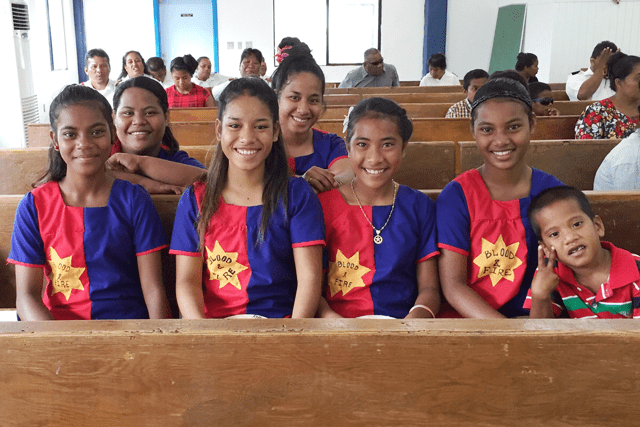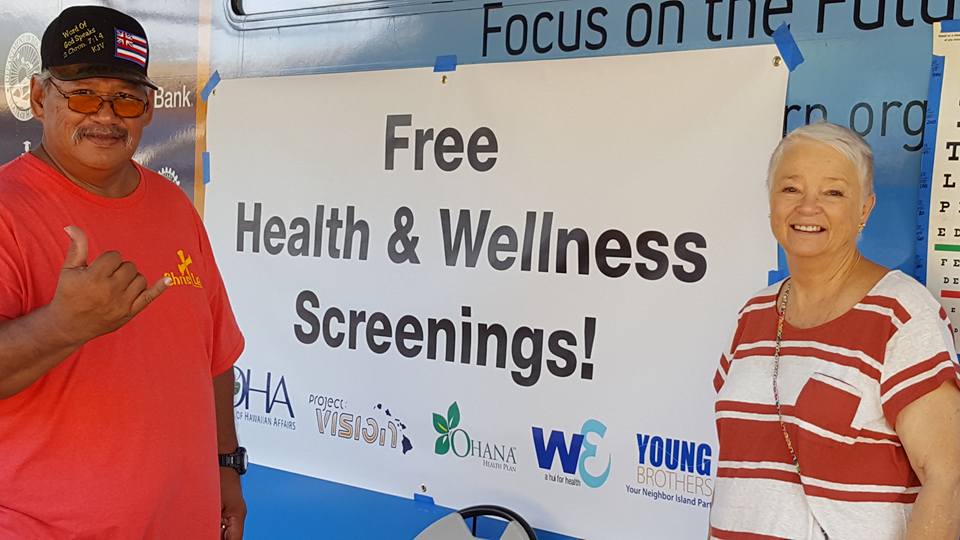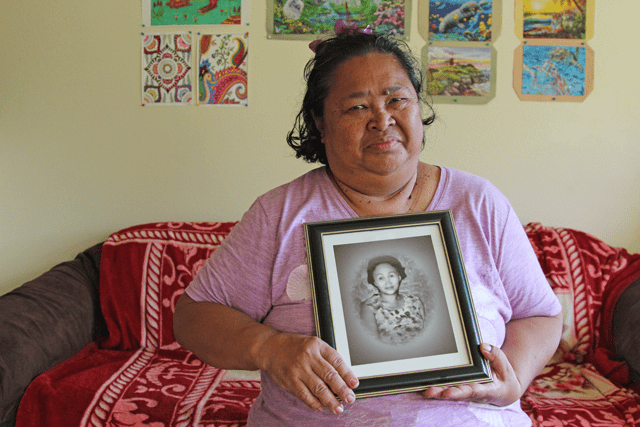Soldiers Capture Their Great Heritage
By Judy Lee –
Physically, the Koloa Corps is an unassuming little building–some would say too small to serve Salvation Army programs. But what of the many men, women and children who call the Koloa Corps “my church”?
The single story structure sits at the end of a large, two-story building made up of tourist shops–a remnant of the plantation life that once existed in Koloa Town.
Four days after Hurricane Iniki struck Kaua’i, the Koloa Corps stood intact with only a few shingles missing from the corner of its roof. A Salvation Army disaster banner was strung over the entrance and sacks of food were being prepared for distribution. The building next to it was not so fortunate, lying wounded with its front walls collapsed on the sidewalk.
Thanks to Lt. Colonel Grace Cline (R) and a 1990 Home League Rally on the Island of Kauai, we have a record of some of those people and their expressions of what Koloa meant to them.
Dan Muraoka lives in San Francisco and writes of his last visit home. “I walked into the building–touched the pulpit, the penitent form, the piano, and just sat in silent meditation, as I tried to capture the memories of joyful, happy and secure times. We had an extended family, with Tutu Medeiros and Mama Jiminez and all the young people. We felt a common bond…As I consider my life today, I realize that my total learning has been service-oriented. I graduated with a degree in social work, and my first job was in a hospital. Then I served as a medic in Vietnam, and am presently a social worker with the Veterans Administration. I am chided by my colleagues because I find myself often delivering groceries, doing shopping and running errands for elderly needy clients after hours, and I know without a doubt that the lessons I learned from The Salvation Army–the love for people, service to people–have influenced me so tremendously that these things are second nature to me.”
Sharon Mashita is an executive secretary for the general counsel at First Hawaiian Bank and married to an attorney from New York. She wrote, “During my adolescence and teenage years, I recall the many happy times I had with The Salvation Army. I learned responsibility, manners, poise, leadership, and understood what caring and sharing meant. I often felt that I was the poorest kid on the block, without a father, and because my friends had new things and my things were secondhand. But on reflection, I see now that I was the richest of them all. The Army gave me tremendous opportunities to travel and serve. I remember my first trip to the Mainland, and being given the privilege of being the spokesperson for the Hawaii delegation in front of a huge crowd of conference attendees. I can look back and think about the “good old days” and the sweet memories of my growing-up years.
Josephine Gampon is a psychiatric social worker in San Jose, Calif., married to a psychiatrist. She writes “Whenever I am home for a visit, I inevitably go past the Koloa building and almost hear the singing coming from the corps. Koloa kids were the most outgoing, vivacious kids in the Army. I remember the witnessing and the street corner services. That was real hard for me–I knew the whole world was looking at me, and I wanted to hide behind the flags. As difficult and as stressful as that was, I learned what it meant to have a cause, to believe in it, and to show my colors publicly–proudly, with my head held high. To this day, no matter how difficult the task I undertake, no matter that others do not share my convictions, I still hold up my head; and what’s amazingly wonderful is that I do know what I am about.”
June Hamada is now a teacher at the Waianae Schools on Hoahu. She writes, “Working with children from an early age helped me in my choice of profession. I was teaching Sunday school class by the age of 11. The years that followed saw me receiving further spiritual and leadership training in activities such as corps cadets and YPL. While studying at the University of Hawaii I received even further training by working as a tutor and recreation worker at The Salvation Army Facilities for Children in Manoa. This gave me further insight, not only into emotionally disturbed young people, but also to other duties required of teachers.
“I feel God has chosen me to be a Salvationist. Not everyone can be happy in The Salvation Army because of the nature of our church. We wear uniforms and we also do a lot of social work that puts us into contact with so-called “undesirable” people. As a young person I sometimes considered changing to a more “normal” church, but I know in my heart that to change for social reasons would be hypocrisy, and today I can see God’s hand as I look upon my career.”
Clarita Doctor states it was probably the arts and crafts at vacation Bible school that piqued her interest in the arts today. “Sunday school was exciting. I can still hear the walls and floors reverberating from the joyous singing. Though crazy and hectic, it made us aware of helping others in the community. Today, volunteer work is an important part of my life.
“Certainly the single most significant event came at age 14, when my speech, “For Christ to Witness and Win,” took me from little Koloa to Youth Councils and eventually to the Territorial Oratorical Competition (she placed second). That event established my self-confidence and self-esteem for many challenges ahead.
“My 20-year involvement with The Salvation Army has left me with happy memories, very special friendships that will last a lifetime, and a commitment to continue supporting its work with the hope that some youth will be as lucky as I was.”
Norma Doctor writes: “I remember the example of our leaders–enthusiastic, always available, teaching us to keep track of details, and always proud of our accomplishments, encouraging and supportive with a clear message, You can do it; you’re great! The result of that message overflowed into the rest of my life so that leadership positions were not scary. As an adult, I have reached back to those years at Koloa as the standard for whatever I do. Everything I have done, I attribute to the Army’s essence in Koloa, the essence which still lingers today.”
Koloa might be a bus stop today if not for Miriam Sasaki, a wonderful woman who brought new life into the corps. Sasaki first came to The Salvation Army in 1958, when Clarita Doctor asked if her children could come to Sunday school. Later, the entire family attended the Koloa Corps and the other families they worshiped with became an extended ohana (family). Sasaki said, “We had a great corps with wonderful people. Our small chapel was not large enough to hold everyone, so the adults would hold their class in the church, and children were divided between a van and a bench outside A’wa Store. The nursery was under my care and held in the only classroom in back of the church. Lt. Colonel Grace Cline (then a captain) would take the older girls and boys to the house. After Sunday school everyone would squeeze together in the chapel.”
Sasaki stated that fund-raising was a constant challenge because Koloa was a small, rural plantation community with very few resources. The decline in sugar and final closing of the plantations was too much for the little corps to survive. Most transferred to the Lihue Corps, some distance away.
In 1988, there were rumors that the Koloa church building would be torn down. Sasaki, with permission of her corps officer, began a Sunday school. It is this work that let the outpost grow, and in 1992 it was rededicated as a corps.
On March 10, 1997, Koloa celebrated its centennial with an open house and Centennial Proclamation Service. As part of the 100-year festivities, Claudie Bagley was made an envoy by Lt. Colonel Chris Buchanan.
The Koloa Corps has survived the end of the plantation era, two major hurricanes, and the city’s plans to turn it into a bus stop. Today, just as it did a century ago, it continues its tradition of service to the community by providing food, clothing, counseling, worship, fellowship, comfort and care.













